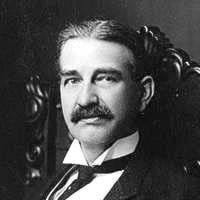Mike Selby
When advance copies of the "Wonderful Wizard of Oz" were sent out to in 1900 in hopes of garnering prepublication reviews, both the author and the publisher got back exactly what they wished for. Almost all the evaluations were unanimously positive, most applauding the book's "creativity" and its "bright and joyous atmosphere."
L. Frank Baum — the book's author — found these reviews highly rewarding, having previously stated "to please a child is a sweet and lovely thing ...I hope my book will succeed in that way — that the children will like it."
Baum's publisher was also pleased, with the book selling out its initial run of 37,000 copies in just over a year. Oddly, this wasn't their, or even Baum's bestseller; that was Baum's "Father Goose," which appeared only a year earlier. At this time, the "Wonderful Wizard of Oz" was seen as "simply a good (not great) inventive, and commercially successful children's book."
They couldn't have been more wrong.
Today, more than a hundred years later, one would be hard pressed to go to any country on the planet, mention "Oz," and find someone who did not know what you were talking about. The same could be said about the expressions "there's no place like home," or "we're not in Kansas anymore." Even the film it inspired (made in 1939) remains one of the most beloved and successful musicals of all time; as well as producing of the most recognizable songs ever written.
Yet even before this, "Oz" had become an unstoppable phenomenon. Before his death in 1919, Baum penned 13 sequels, which were then continued by a variety of authors, the most recent one Baum's great-grandson.
Besides conquering ever corner of the world, two odd aspects of the book are worth noting. The first is Ralph Ulveling, who — as director of Detroit's Public Library System — proudly admitted that the "Wonderful Wizard of Oz" had been not allowed in any Detroit public library for the past 30 years. Ulveling's reasoning was there was nothing "uplifting or elevating" in any of the "Oz" books. Sadly, other librarians had followed suit, but probably not as much as Mary Hays Marable, a librarian from Oklahoma who actually taught a course on how to remove "Oz" books from libraries.
Unlike most stories about censorship, the response to this one was swift. After securing the copyright, the 'Detroit Times' printed the entire book chapter by chapter, ensuring children would have a chance to read it. Historian Russell Nye quickly issued a statement stating ""if the message of the Oz books — that love, kindness, and unselfishness make the world a better place — seems of no value today, it is perhaps time to reassess a good many other things besides the Detroit Library's approved list of children's books."
Mathematician Martin Gardner probably said it best, stating "Personally, I find it easier to believe in the Scarecrow than in Mr. Ulveling."
(It should be added that Ulveling came to reverse his position, and became a strong force for intellectual freedom throughout the United States).
The second odd thing surrounding Dorothy's adventures happened in 1964, when Henry Littlefield published a extremely well researched, yet absolutely bizarre theory about the "Wonderful Wizard of Oz" having to do with America's monetary crisis of 1890. More on this next week.
Mike Selby is Reference Librarian at the Cranbrook Public Library
